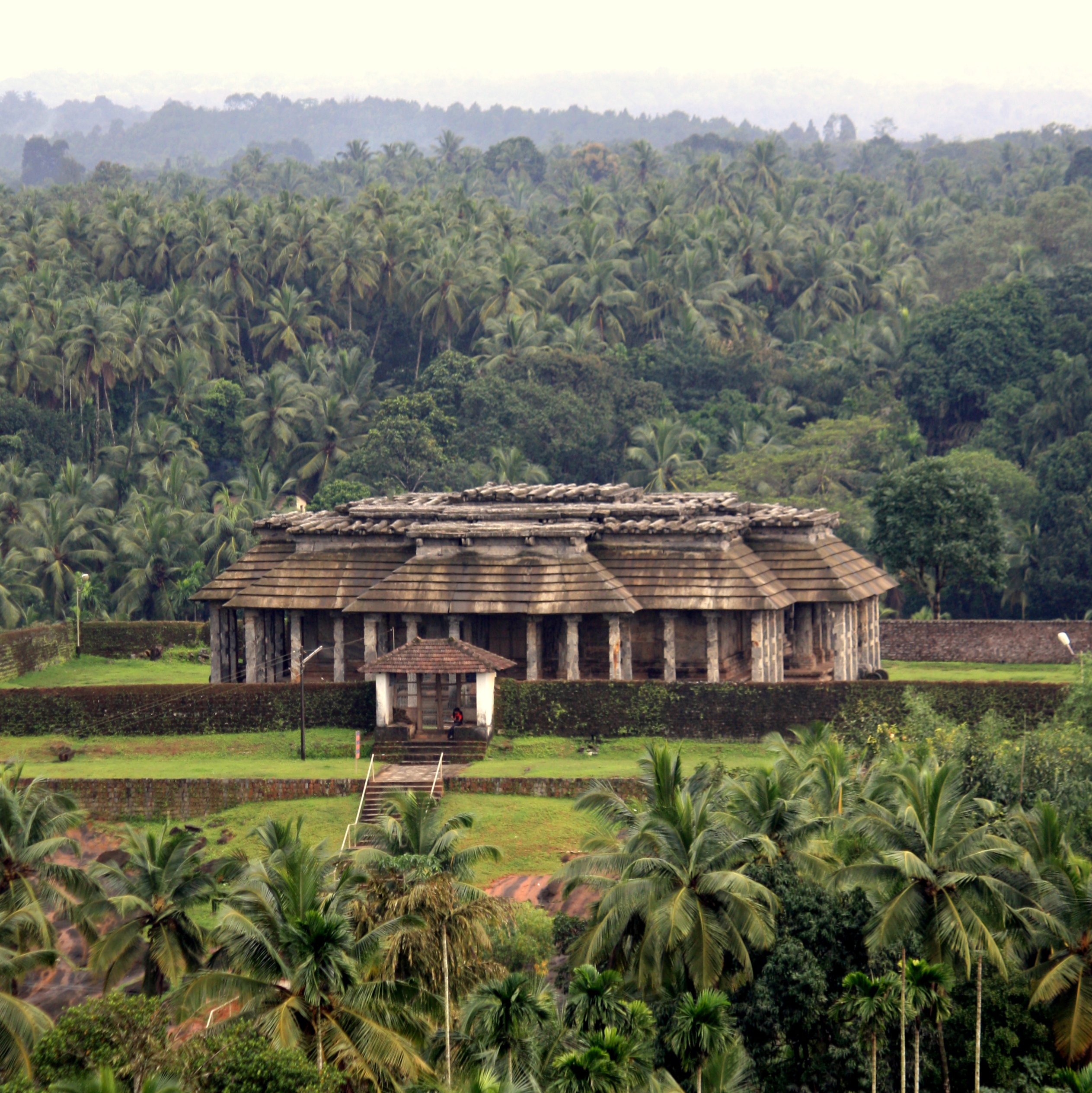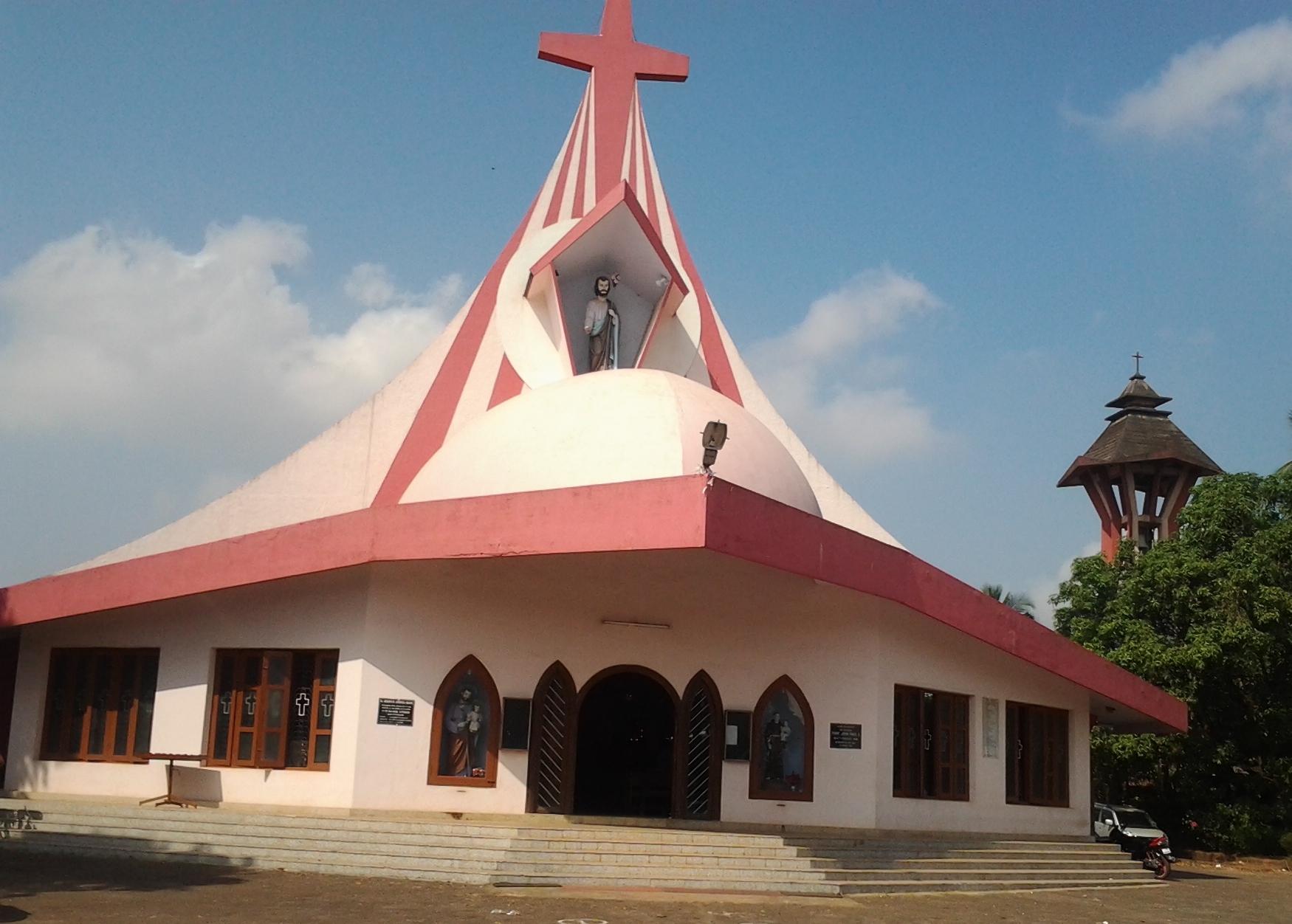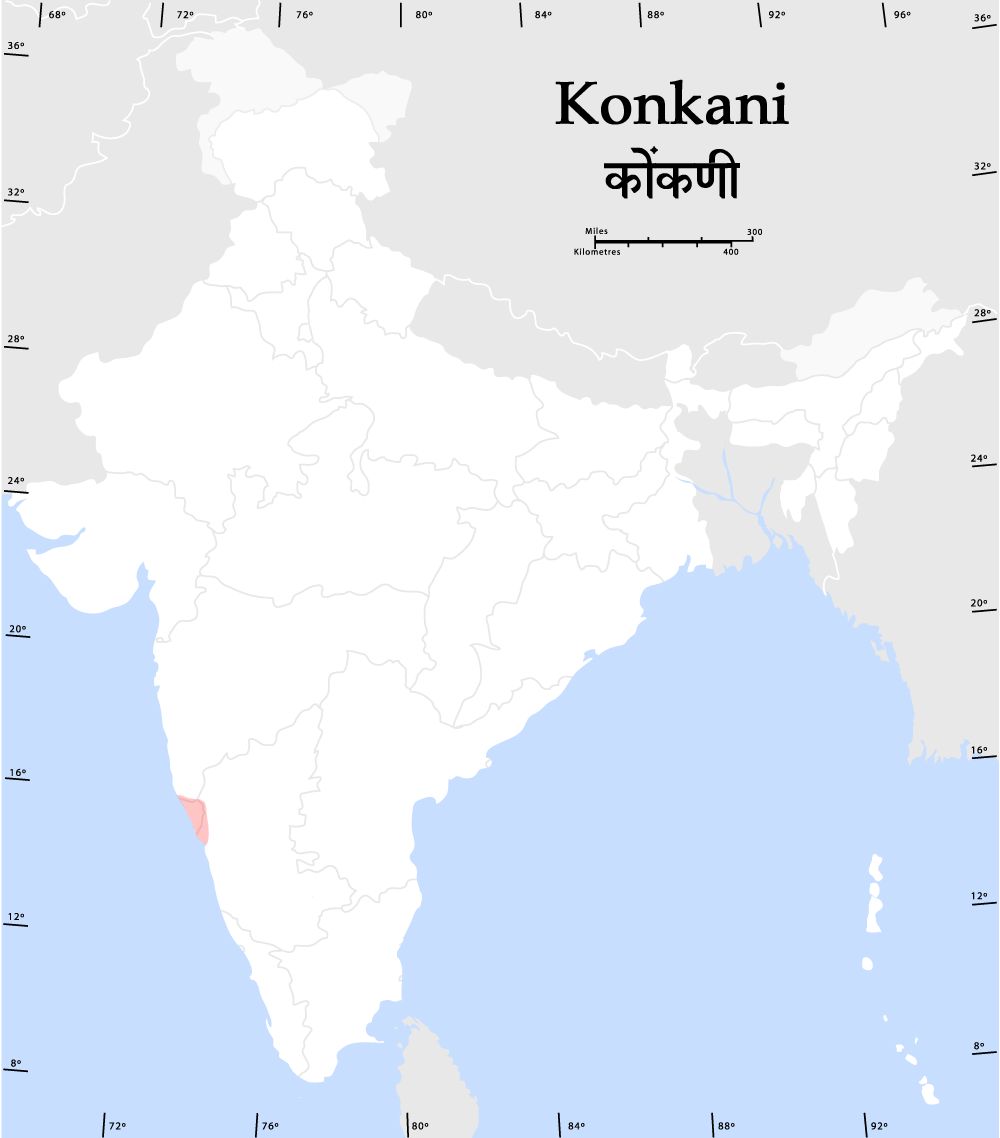|
Padubidri
Padubidri or Padubidre or Padubedre in Tulu language is a small town in coastal district of Udupi in Karnataka state, India. Padubidri is on the way from Udupi to Mangalore route. National Highway 17 (now NH 66) passes through Padubidri. Padubidri is famous for ritual Dakkebali, which is held every two years. This ritual is held in odd series of years 2005, 2007 and so on. The Nandikoor thermal power plant also known as Udupi thermal power plant is nearby. Ethnicity Padubidri has a large Tuluva ethnic group followed by Kannadiga, Konkanis, Beary and Urdu population. Transportation All buses ply to adubidrifrom Mangalore to Udupi and Karkala, connecting the three major cities en route to Padubidri. The nearest airport is at Bajpe, which is a 45-minute drive away. There is a railway station at Padubidri on Konkan Railway The Konkan Railway (abbreviated KR) is one of the 19 railway zones in India with its headquarters at CBD Belapur in Navi Mumbai, Maharashtra, India. ... [...More Info...] [...Related Items...] OR: [Wikipedia] [Google] [Baidu] |
Karkala
''Karkala'' also known as Karla in Tulu language, is a town and the headquarters of Karkala taluk in the Udupi district of Karnataka, India. Located about 60 km from Mangalore in the Tulu Nadu region of the state,it lies near the foothills of the Western Ghats.Karkala has a number of natural and historical landmarks, and is a major tourist and transit destination due to its strategic location along the way to Hebri, Sringeri, Kalasa, Horanadu, Udupi, Kollur, Subrahmanya and Dharmasthala. Etymology Black granite is abundant in the area, and used widely in the local architecture. Hence, the name of the town is derived from ''kari-kal'', meaning black stone. There is still a place called as 'Kariya Kall' in the city which means 'Black Rock' in Tulu and Kannada languages. The name 'Kariya Kall/ ಕರಿಯಕಲ್ಲ್' changed to 'Karikal/ಕರಿಕಲ್' and eventually to 'Karkal/ಕರ್ಕಲ್/ಕಾರ್ಕಳ್'. However, some studies assert that the or ... [...More Info...] [...Related Items...] OR: [Wikipedia] [Google] [Baidu] |
Santhoor Subramanya Temple
Santhoor Subramanya Temple is a Hindu temple located in the village of Santhoor near Padubidri, Karnataka. Here Kartikeya is worshipped as Subramanya, lord of all serpents. The main festivals celebrated here includes Shashti, Kiru Shashti and Nagara Panchami. During the Shashti Mahotsav Devotees in thousands come into the temple, early in the morning for having Darshan of God, offered special poojas Pooja Gauthami Umashankar, mononymously known as Pooja, is an Indian-Sri Lankan actress, who has primarily appeared in Tamil cinema, Tamil, Cinema of Sri Lanka, Sinhala and Malayalam language films. Early and personal life Pooja's mother, Sandhy ... and sought the blessing from God Subramanya for good health, wealth, prosperity and peace. References {{coord missing, Karnataka Hindu pilgrimage sites in India Hindu temples in Dakshina Kannada district Murugan temples in Karnataka History of Karnataka Culture of Karnataka Hindu temples in Mangalore Tourist attractions ... [...More Info...] [...Related Items...] OR: [Wikipedia] [Google] [Baidu] |
Karnataka
Karnataka (; ISO: , , also known as Karunāḍu) is a state in the southwestern region of India. It was formed on 1 November 1956, with the passage of the States Reorganisation Act. Originally known as Mysore State , it was renamed ''Karnataka'' in 1973. The state corresponds to the Carnatic region. Its capital and largest city is Bengaluru. Karnataka is bordered by the Lakshadweep Sea to the west, Goa to the northwest, Maharashtra to the north, Telangana to the northeast, Andhra Pradesh to the east, Tamil Nadu to the southeast, and Kerala to the southwest. It is the only southern state to have land borders with all of the other four southern Indian sister states. The state covers an area of , or 5.83 percent of the total geographical area of India. It is the sixth-largest Indian state by area. With 61,130,704 inhabitants at the 2011 census, Karnataka is the eighth-largest state by population, comprising 31 districts. Kannada, one of the classical languages of India, ... [...More Info...] [...Related Items...] OR: [Wikipedia] [Google] [Baidu] |
Beary Language
Beary or Byari (ಬ್ಯಾರಿ ಬಾಸೆ ''Byāri Bāse'') is a Dravidian languages, Dravidian language spoken by the Muslim communities mainly of Karnataka (Dakshina Kannada and Udupi District, Udupi districts) and extreme northern end of Kerala like Manjeshwaram, Kunjathur, Uppala, Hosangadi of Kasaragod district (''Byaris'')., p. ix Bearys speak a language made of Malayalam idioms with Tulu language, Tulu phonology and grammar. This language is traditionally known as ''Mappila Bashe'' because of Bearys' close contact with Mappila, the Malayali Muslims. Due to the intensive influence of Tulu for centuries, it is today considered close to both Tulu language, Tulu and Malayalam. Features The language uses the Arabic language, Arabic and Kannada language, Kannada alphabets for writing. Being a distant cousin of other dialects of Malayalam and surrounded by other language family, linguistic groups for centuries, mainly Tulu, the dialect exhibits ancient features as well as ... [...More Info...] [...Related Items...] OR: [Wikipedia] [Google] [Baidu] |
Dakkebali
Dakkebali is a form of snake worship, also referred to as ''nagaradhane'' as well as worship of nature by Tulu people of Tulunadu. It is typically practiced in the town of Padubidri in the Udupi district, Karnataka, India. The festival is held once every other year, alternating with the Paryaya festival at nearby Udupi. It is also held every year in Thantrady Bairy Bettu Udupi District Dakkebali (Bramha mandala). This pooja is performed for Naga, Bramha, Raktheshwari, Nandikonna, Haygulli, Kshetrapala, Bagilu Bobbarya, Motukalu Bobbarya, and Yakshi. This is Pancha Shaiva kshetra, and the current priest is Sri Nagaraja Bairy. At present Dakkebali will be performed every two years at Naga and Bramha by the Ramanna Bairy Family and devotees from nearby places. About Dakkebali Dakkebali are the result of everyone present praying with intense Bhakthi (devotion), making intricate gifts to the Lord, dancing to music, deepas (light), drawing Mandalas, flowers, fruits, and pingara, and ... [...More Info...] [...Related Items...] OR: [Wikipedia] [Google] [Baidu] |
Udupi
Udupi (alternate spelling Udipi; also known as Odipu) is a city in the Indian state of Karnataka. Udupi is situated about north of the educational, commercial and industrial hub of Mangalore and about west of state capital Bangalore by road. It is the administrative headquarters of Udupi district, and one of the fastest-growing cities in Karnataka. Udupi is one of the top tourist attractions in Karnataka and has various educational institutions. It is notable for the Krishna Temple and is also known as the temple city. It also lends its name to the popular Udupi cuisine, is also known as Parashurama Kshetra , and is famous for Kanakana kindi. A centre of pilgrimage, Udupi is known as Rajata Peetha and Shivalli (Shivabelle). Etymology The name ''Udupi'' is the stylized form of the city. History In the 13th century, Vaishnavite saint Madhvacharya founded the Sri Krishna Temple. He set up eight ''mathas'' - Ashta Mathas- In Kannada - ಅಷ್ಟ ಮಠಗಳು in Udupi t ... [...More Info...] [...Related Items...] OR: [Wikipedia] [Google] [Baidu] |
Mangalore
Mangalore (), officially known as Mangaluru, is a major port city of the Indian state of Karnataka. It is located between the Arabian Sea and the Western Ghats about west of Bangalore, the state capital, 20 km north of Karnataka–Kerala border, 297 km south of Goa. Mangalore is the state's only city to have all four modes of transport—air, road, rail and sea. The population of the urban agglomeration was 619,664 national census of India. It is known for being one of the locations of the Indian strategic petroleum reserves. The city developed as a port in the Arabian Sea during ancient times, and has since become a major port of India that handles 75 percent of India's coffee and cashew exports. It is also the country's seventh largest container port. Mangalore has been ruled by several major powers, including the Kadambas, Alupas, Vijayanagar Empire, Keladi Nayaks, and the Portuguese. The city was a source of contention between the British a ... [...More Info...] [...Related Items...] OR: [Wikipedia] [Google] [Baidu] |
Konkan Railway
The Konkan Railway (abbreviated KR) is one of the 19 railway zones in India with its headquarters at CBD Belapur in Navi Mumbai, Maharashtra, India. The first passenger train ran on Konkan railway tracks on 20 March 1993, between Udupi and Mangalore. During its initial years of operation in the mountainous Konkan region, a number of accidents prompted Konkan Railway to implement new technology. Anti-collision devices, the Sky Bus and roll-on/roll-off are several of the railway's innovations. The long railway line connects the states of Maharashtra, Goa and Karnataka. The first train on the completed track was sent off on 26 January 1998. History Background For most of the modern era, the Konkan coast of India did not have a railway link connecting its coastal cities, towns and villages. Even the British who ruled India until 1947 did not build a railway along this route. The first proposal was surveyed in 1920. In 1957 an aerial survey was conducted of the area between ... [...More Info...] [...Related Items...] OR: [Wikipedia] [Google] [Baidu] |
Bajpe
Bajpe is a locality in Mangalore city of Dakshina Kannada district in the state of Karnataka, now also known as Bajpe Town, India. It is around from the city of Mangalore. The Mangalore International Airport is located at Bajpe and was previously known as the Bajpe Aerodrome. City bus number 47 connects Bajpe to State Bank.There are a number of villages surrounding Bajpe, for which it serves as a hub. The nearby villages to which Bajpe serves as hub are Permude, Hosabettu, Kinnigoli, Kalamundkur and Kateel. Bajpe is derived from the Tulu word, Bija da Appe (Mother of Seeds) since it was famous for its agricultural market in olden days. Bajpe now its declared as a Town and official Known aBajpe Townby Municipal Administration of Dakshina Kannada District and its Bajpe is a fast growing suburb of Mangalore in the field of Tourism and Business. Demographics , India census, Bajpe had a population of 17,032. Males constitute 48 per cent of the population and females 52 per cent. ... [...More Info...] [...Related Items...] OR: [Wikipedia] [Google] [Baidu] |
Beary
The Beary (also known as Byari) is a community concentrated along the southwest coast of India, mostly in the Mangalore district of the south Indian state of Karnataka. They are an ethnic group of Indian Muslims with their own distinct culture and identity along with other Muslims of the coastal India, like ''Nawayaths'' of the North Canara, Moplahs of the Malabar region & the Labbay of the Coromandel. Bearys incorporate the local Tulu culture of Magalore and diverse traditions of the Moplahs of the Malabar coast. The Beary community of Maikala is one among the earliest Muslim inhabitants of India, with a clear history of more than 950 years. One mosque, Masjid Zeenath Baksh was built in the Bunder area of Mangalore by Malik Deenar, an Arab Da'ee, in 644Ahmed Noori, Maikala, II edition, p.11 (1997) Etymology The word 'Beary' is said to be derived from the Tulu word 'Byara', which means trade or business. Since the major portion of the community was involved in busines ... [...More Info...] [...Related Items...] OR: [Wikipedia] [Google] [Baidu] |
Konkanis
The Konkan people ( Konkani) Konkanis : are an Indo-Aryan ethnolinguistic group native to the Konkan region of the Indian subcontinent who speak various dialects of the Konkani language. Konkani is the state language of Goa and also spoken by populations in coastal Karnataka, coastal Maharashtra, and Kerala. Other Konkani speakers are found in Gujarat state. A large percentage of Konkani people are bilingual. Etymology The word ''Konkan'' and, in turn ''Konkani'', is derived from ' or . Different authorities explain etymology of this word differently. Some include: *''Koṇ'' meaning top of the mountain. *Name of aboriginal mother goddess, which is sometimes sanskritised to mean goddess Renuka. Thus the name ''Konkane'', comes from the word ', which means ''the people of Konkan''. Sub-ethnic groups Endonyms In general, in Konkani the masculine form used to address a Konkani speaker is ' and the feminine form is . The plural form is ''Konkane'' or ''Konkani''. In Goa ''K ... [...More Info...] [...Related Items...] OR: [Wikipedia] [Google] [Baidu] |
Kannadiga
The Kannada people or Kannadigaru IAST">nowiki/>IAST:_Kannadadavaru_or_Kannadigas_(English_term).html" ;"title="IAST.html" ;"title="nowiki/>IAST">nowiki/>IAST: Kannadadavaru or Kannadigas (English term)">IAST.html" ;"title="nowiki/>IAST">nowiki/>IAST: Kannadadavaru or Kannadigas (English term)are an ethno-linguistic group who trace their ancestry to the South Indian state of Karnataka in India and its surrounding regions. Kannada stands among 30 of the most widely spoken languages of the world as of 2001. Evidence for human habitation in Karnataka exists from at least the 2nd millennium BCE, and the region is postulated to have had contact with the Indus Valley civilization. The existence of artifacts (such as Roman coins) shows Karnataka was engaged in trade as early as the 1st century CE. In the 3rd-4th century BCE the land was ruled by the Mauryas and Jainism was very popular. After the Mauryas, parts of Karnataka were variously ruled by dynasties who were either ethnicall ... [...More Info...] [...Related Items...] OR: [Wikipedia] [Google] [Baidu] |






